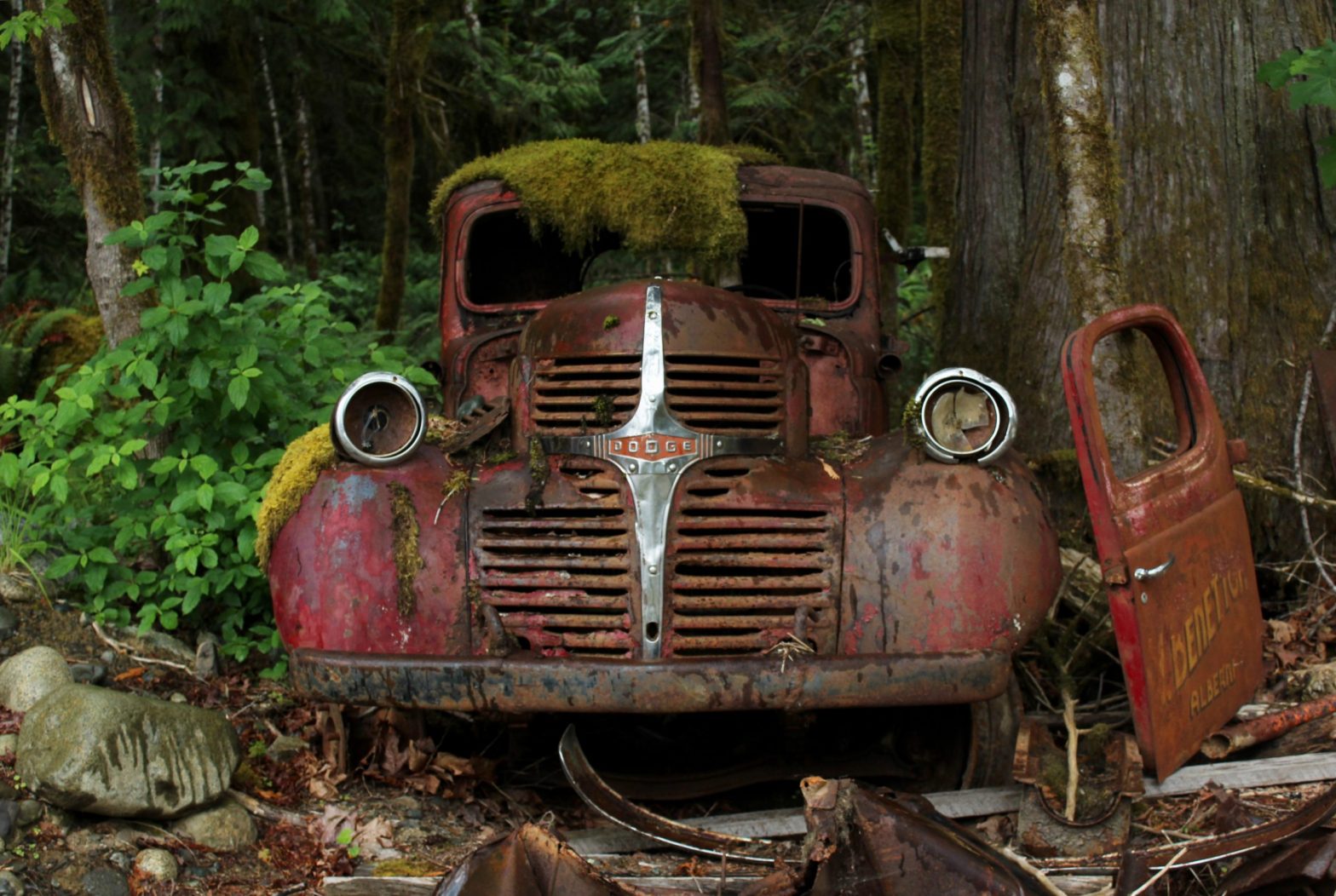Rusted Jalopy
3 September 2020
Judges 2:11–23; Ezekiel 24:1–14
Prior to the discovery of titanium (and development of ways to use it), steel was the material of choice for strength, durability, and being shapable. Even now it remains the primary tool material as it is less expensive than titanium. It does have its issues, however.
We’ve all seen photos of old rusted/rustic cars. The photos are artistically beautiful, but the cars are useless for what they were built to be.
Rust is a sign that the iron in the steel is being “attacked”. Rust breaks down the bonds in the metal to the point that formerly strong steel turns into dust when touched.
Rust can also build onto itself. So, while it is growing “down” into the metal, it can grow thicker. Then it can become like armor to the steel or iron, however, there is the risk that while the “armor” may be strong, the underlying metal is very weak.
There are several techniques to remove rust. One is to blast it with a combination of sand. Another method is to grind or sand it. Another is to dip it into acid. Interestingly, acid is also used to help steel (specifically, stainless steel) become more corrosion-resistant.
In metallurgy terms, rust is corrosion. Corrosion is not a good thing. Corrosion is built on the same root (in English) as corruption. Corruption, like rust, can start small and almost unnoticeable. However, unless it is cleansed, it will destroy the “host”.
In many ways, the People of Israel left Egypt with the seeds of corrosion embedded in them. For 40 years, they were “sandblasted” in the desert to remove the corruption. It didn’t last.
The “seeds” were still there. They succumbed to temptations and became corrupted. The Book of Judges talks about the ebb and flow, but the people never seem to be able or willing to give up the seed of corrosion.
By the time of Ezekiel, the corruption was to the point that their spiritual hearts would crumble to dust at a touch. The rough vision presented is along the lines of the corruption of Israel became the pot that was the crucible of their destruction. They willingly jumped into the pot and became nothing at all.
We, sadly, are not much different. The seeds of corruption remain in us, even after our salvation. Our purification (progressive then entire sanctification) is a result of our willingness to set ourselves at the feet of God, allowing and asking to be cleansed of everything the separates from the holiness of God.
While it is easy to look at the world and see its corruption and eventual destruction, we must be aware that we will also fall to corruption and destruction if we do not daily surrender ourselves to Christ and ask for cleansing by the Holy Spirit.
※ Prayer ※
Father, Son, and Holy Spirit, guide us into your perfect will. Help us to follow your will and walk the path that you have laid before us. Amen.
※ Questions ※
1) What’s the first thing you think of with the word “corruption”? Why is that the first thing that comes to mind?
2) Why is it important to understand the ever-presence of the “seeds” of corruption?
3) Do you really think that we need “purification” after our salvation? Why or why not?

